How to Set Up a Dual Monitor Desktop – Windows
Add More Screen Real Estate to Get More Done
Overview: See how to boost your productivity by setting up a two monitor desktop on your Windows computer.
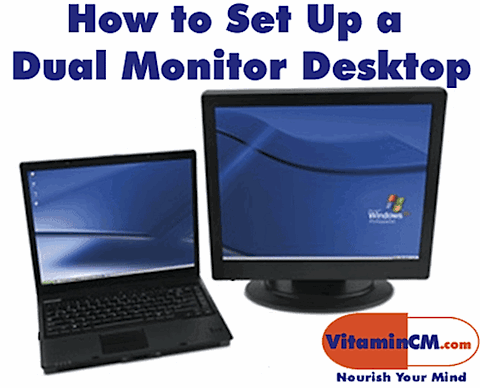
If you have a laptop, or a desktop with a dual-port video card, you can stretch your desktop across two monitors. This is an extremely easy way to boost your productivity when working with multiple documents and applications.
Frequently, you need to constantly jump back and forth between multiple windows on your computer. This becomes confusing, because one of the windows is always hidden behind the other. When you need to make comparisons or analysis, it is easy to miss small details.
Why not have two monitors and view both windows side-by-side at the same time, like you would do if you were comparing two printed documents.
This is a very quick and easy process.
What you will need:
- One external monitor
- One laptop or desktop computer
- Two minutes
Optional: If you have a desktop, you can still do this. You will need to get two external monitors and make sure that you have a dual-port video card. The diagram below shows what a dual-port video card will look like on your computer.
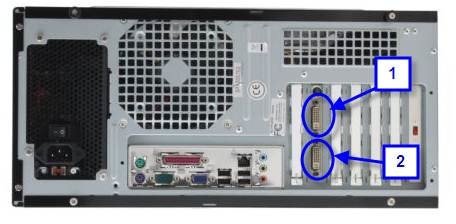
Setting up the Hardware
Start by plugging the external monitor into your laptop’s monitor port.
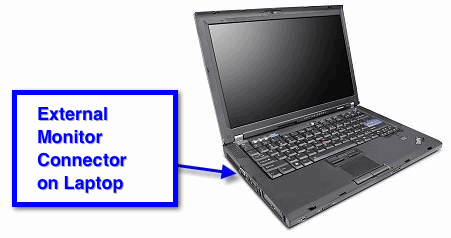
Turn on your computer and log in.
Configuring Your Settings
Minimize any software that you have open until you see your desktop.
Right click on your desktop to open an options menu.
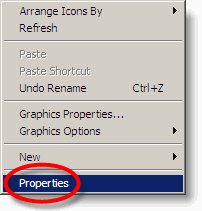
Select Properties from the options menu.
The Display Properties menu will open.
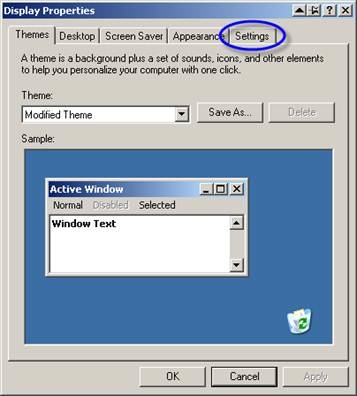
There are five tabs on this menu. Click the Settings tab.
The settings tab will allow you to control how the monitor(s) on your system work.
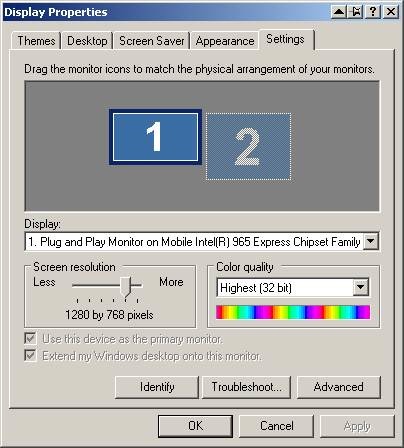
If you have the external monitors hooked up, you will see two boxes in the top portion of the menu. (Numbers 1 and 2 represent your two monitors.)
By default, they will both have the same exact information. This is so that if you ever hook up a projector, you and the audience will see the same thing.
Spilt the Two Monitors
Now, you want to make the second (external) monitor act independently of the laptop’s monitor.
Click on the “2” icon to view and edit the second monitor’s settings.
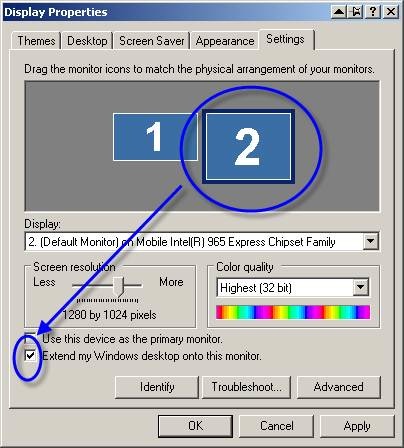
The last checkbox at the bottom of the screen will allow you to split the monitors in two. Check the Extend my Windows desktop onto this monitor checkbox.
Do not close the Display Properties menu yet.
Arrangingthe Montitors to Match their Physical Locations
Depending on how you have your laptop and monitor positioned on your desk, you may need to adjust the arrangement on screen.
By default, the laptop’s monitor (1) will be to the left of the external monitor (2). If you don’t have your desk set up this way, you will need to click and drag them to match your setup.
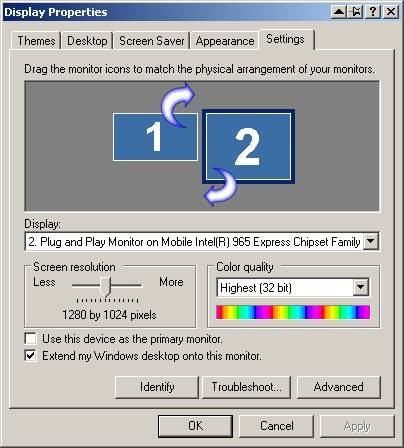
Identifying your Physical Montiors
You can always see which monitor is which by clicking the Identify button at the bottom of the Display Properties menu.
A giant number 1 and 2 will appear on each monitor for identification purposes.
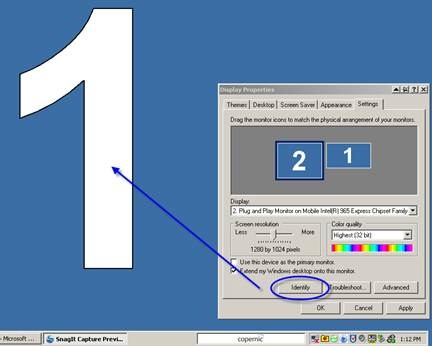
Moving Applications Between Monitors
Now that you have both of your monitors set up and working properly, you can separate windows into whichever one is most convenient.
You cannot move a window if it is maximized on one monitor. You will need to “un-maximize” the window before it can be moved.
Click the ![]() button to un-maximize the window.
button to un-maximize the window.

Click on the Title Bar at the top of the window and drag it from one monitor to the other.
Click and drag the bottom corner of the window to resize it, or just click the maximize button to re-maximize the window.
Final Step:
Sit back and bask in the glory of your super-terrific multi-monitor wonderland.
See How it’s Done in this Video Tutorial
The following video tutorial shows you how to set up a two monitor desktop on a windows computer.
Did you Like this Article?
Why not get free updates from VitaminCM.com?

Or just  Follow me on Twitter, where I am constantly sharing great articles written by people WAY smarter than me. Or, see some of the other places where you can connect with me out there in the wilds of the internets.
Follow me on Twitter, where I am constantly sharing great articles written by people WAY smarter than me. Or, see some of the other places where you can connect with me out there in the wilds of the internets.
Share Files Between All of your Computers
Sharing Files Between Any Devices in your Home
OVERVIEW: You will learn how to share folders and file on your Windows, Macintosh, and Linux computers on your home netork.
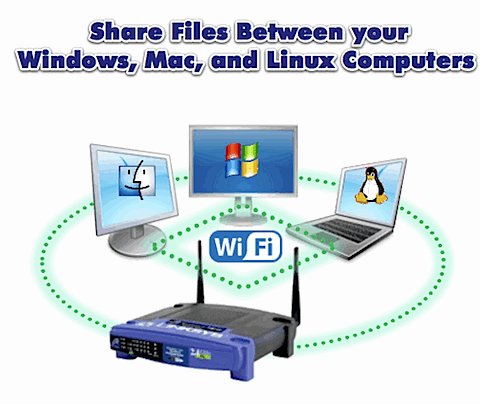
This is the first article in a three part series on Sharing Files Between Any Devices in your Home.
- Part 1 – Share Files Between All of your Computers
- Part 2 – Stream Computer Media to the TV using Video Game Consoles
- Part 3 – Sharing Between your Smartphone and Computer
You Can Get there from Here
Your home has any number of “connected” devices (Computers, Video Game Consoles, Phones, Portable Media Players, Televisionss, DVRs, etc.). Are they all really connected? Here are some simple (and not so simple) steps to get all of your devices singing in harmony.
Sharing Files on your Computers
If you’re like me, the bulk of your media and files sit on one or more computers. You may even have more than one Operating System to further complicate the business of sharing information. Here is how you can share your files between computers runing Windows, Mac, and Linux.
NOTE: This article only addresses sharing files between devices INSIDE of your home network. While connecting to devices on your home network from the outside world (internet) is possible, it will not be covered here.
Sharing the Files on your Computers
IMPORTANT: The following set of instructions shows how to share ALL of the files on your computer. This is not the most secure approach to sharing. You should determine which folders you want to share (for example My Documents or My Music) and perform the following steps at that level.
Sharing Files on a Windows Computer
Windows allows you to share an entire hard drive or select specific folder to share. You can choose the drive or folder to share from Windows Explorer.
Open Windows Explorer (Windows Key + E)
You will see all of your computer’s drives (C, D, etc.)
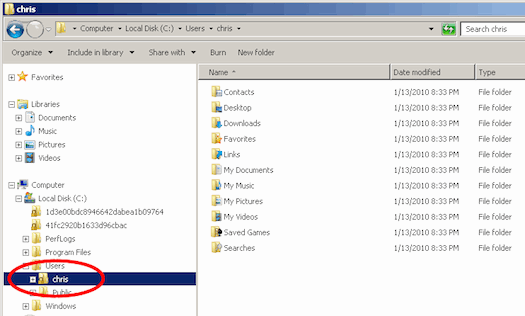
Browse to the entire drive or specific folder that you would like to share.
Right click on the folder that you want to share and select Properties from the options menu.
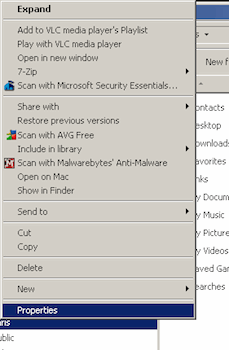
The Properties menu will open.
Go to the Sharing tab
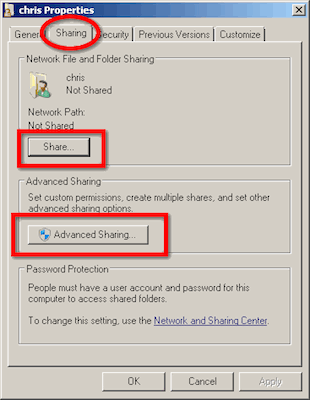
Check the Share button.
Optional: You can also apply finer controls to the sharing priviledges from the Advanced Sharing menu.
Click the OK button to close the Properties menu.
Now, users on your network will be able to access the files on this compter.
Sharing Files on a Mac Computer
You can also share folders with other computers on your Mac computer. You need to go to the System Preferences menu to configure sharing (Applications> System Preferences).
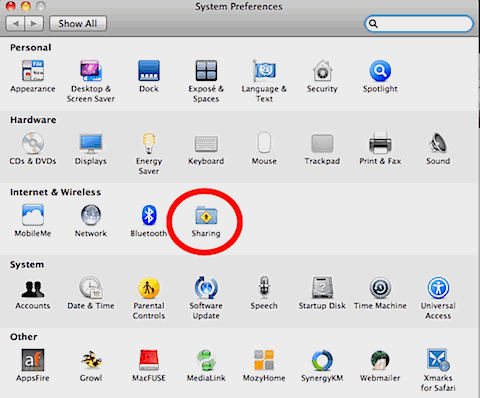
The preferences are grouped by topic on this menu. Click the Sharing icon under the Internet & Wireless heading.
This will open the Sharing panel.
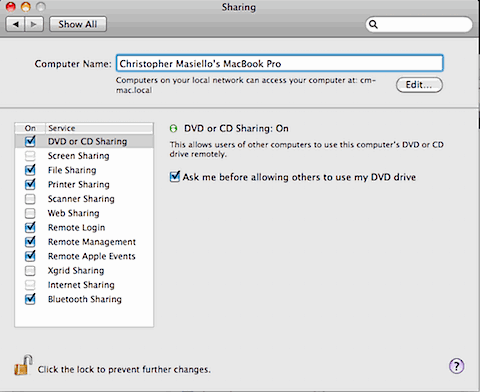
You can share several of your Mac’s resources from here.
Check the resources that you want to share and close this menu.
Now, other computers on your network will be able to this compter.
Sharing Files on a Linux Computer
One of the best and easiest ways to share folders between Linux computers and machines running Windows is using Samba. Samba is a suite of applications for Linux that provides connectivity between Linux and Windows machines. This will allow a Windows machine to interact with it just like another PC.
NOTE: This example uses Ubuntu Linux. If you use a different distro, just Google for the specific instructions.
Start out by installing Samba on your Linux machine. Go to the terminal and type the following command:
sudo apt-get install samba smbfs
Samba is installed now, but you need to configure it so that it is accessible. Run the following command to open Samba’s configuration file (smb.conf):
sudo gedit /etc/samba/smb.conf
Scroll down to this section in the file:

Uncomment the security line (delete the number sign), and add the following line below it, so that it look like this:
security = user
username map = /etc/samba/smbusers
Now, Samba will use the smbusers file to look up the user list.
You need to creat a user that can access the Samba server.
There are two steps to creating a user.
Run the smbpasswd utility to create a samba password for the user. Type the following command (substitute a real user name for “username”):
sudo smbpasswd -a <username>
Next, open up the smbusers file and add that username. Type the followng command:
sudo gedit /etc/samba/smbusers
When the smb users file opens, add the following line, (substitute a real user name for “username”).
<username> = “<username>”
The format is <ubuntuusername> = “<samba username>”.
Telling Samba to Share a Linux Directory
Now you can create Samba shares and give access to the user(s) that you create here.
Reopen Samba’s configuration file (smb.conf) by typing the following command:
sudo gedit /etc/samba/smb.conf
Scroll down to the Share Definitions section of the file, and make it match the following:
#======================= Share Definitions =======
# Un-comment the following (and tweak the other settings below to suit)
# to enable the default home directory shares. This will share each
# user’s home directory as \server\username
[homes]
comment = Home Directories
browseable = yes
# By default, \server\username shares can be connected to by anyone
# with access to the samba server. Un-comment the following parameter
# to make sure that only “username” can connect to \server\username
valid users = %S
# By default, the home directories are exported read-only. Change next
# parameter to ‘yes’ if you want to be able to write to them.
writable = yes
Now Windows machines/users will be able to map a drive on windows using the following share format:
\ubuntumachinename\username
For example, if the Ubuntu machine is named linuxshare, and the username is chris, your share path would be \linuxshare\chris
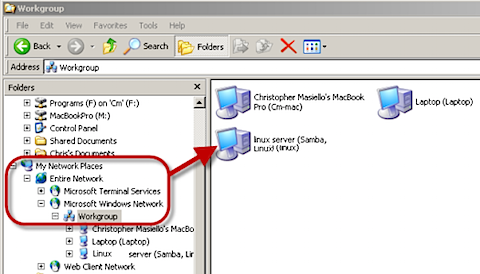
Connnecting to a Shared Computer
Now that you have the files on all of your machines shared, you need to connect to them from another machine. You can even “map” these shared drives permanently so that they are always available, just like your computer’s Hard Drive or CD/DVD Drive.
Connecting to a Shared Computer from a Windows Computer
You can locate shared computers on your network from the My Network Places section of Windows Explorer.
Open Windows Explorer (Windows Key + E)
Click the “+” icon to the left of My Network Places in the folders panel. (View> Explorer Bar> Folders)
Click the “+” icon to the left of Entire Network
Click the “+” icon to the left of Microsoft Windows Network
Look for the name of the shared computer/drive Drill down on that compter as if it were a folder on your computer.
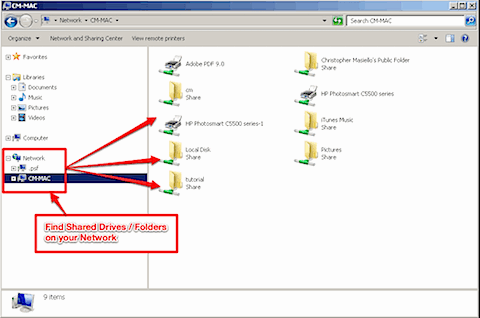
Permanently Mapping to a Shared Drive in Windows
If you want to Window Explorer to remember this shared folder and give it a drive letter (like your C or D drives) you need to “Map” it.
Select Tools> Map Network Drive
Select a letter for this share from the Drive dropdown list
Click the Browse button to the right of the Folder dropdown list
Use the steps above to locate the shared drive/folder that you want to map
Check the Reconnect at Logon box (this will remember the letter/drive mapping)
Click the Finish button
Now, the next time you start the computer the shared folder will appear just like your local hard drive or CD drive with the letter you assigned.
Connecting to a Shared Computer from a Mac Computer
You can locate shared folders on other computers on your network using the Finder application on your Mac. (Applications> Finder)
Click on your Mac, so that you can see the local drives and the Network icon.
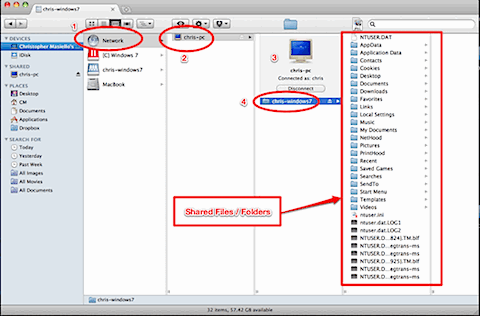
You will see any computers that have shared drives/folders on your network.
Click on the shared machine to access its files.
Permanently Mapping to a Shared Drive in Mac
If you want Finder to remember this shared folder just like the ones on your local machine you need to “Add it to the Sidebar”.
Browse to the shared folder and click File> Add To Sidebar.
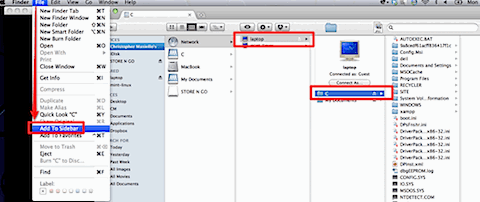
Now it will show up under the Places heading on Finder’s sidebar.
Connecting to a Shared Computer from a Linux Computer
You can locate shared folders on other computers on your network using one of the many file manager applications available in Linux.
NOTE: This example uses Dolphin to navigate Linux’s file system.
Open Dolphin and click the Network icon in the Places panel.
You will see a list of ways to access your Network and the shared folders located on its machines.
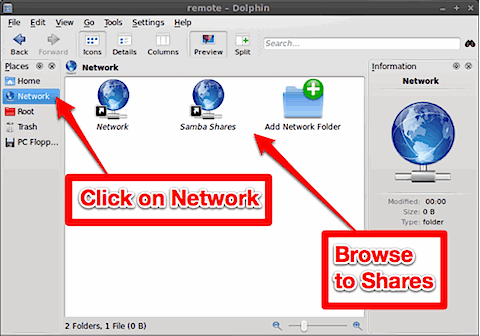
Click Network to locate Linux and Mac machines. Click Samba Shares to locate Windows machines.
Permanently Mapping to a Shared Drive in Linux
If you want Linux to remember this shared folder just like the ones on your local machine you need to “Add it to the Sidebar”.
Browse to the shared folder and click File> Add To Sidebar.
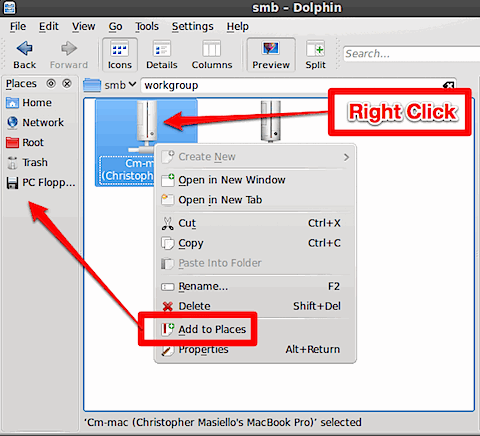
Video Tutorial – See it in Action
See how to perform each of the steps listed above in this video tutorial
Wanna make sure that you don’t miss anything?
Get free updates from VitaminCM.com

Or just  Follow me on Twitter, where I am constantly sharing great articles written by people WAY smarter than me. Or, see some of the other places where you can connect with me out there in the wilds of the internets.
Follow me on Twitter, where I am constantly sharing great articles written by people WAY smarter than me. Or, see some of the other places where you can connect with me out there in the wilds of the internets.
Bring Excel Data to Life with Conditional Formatting
Learn how to use Microsoft Excel 2007’s advanced conditional formatting features to take your boring data and make it tell a more interesting story.
Updating Multiple Social Media Services Doesn’t Have to Take Forever
Updating Everything at Once Using Pixelpipe
OVERVIEW: You will learn how to use the free service PixelPipe.com to upload files to multiple social media sites from one location.
![]()
Reclaiming Some of your Precious Time
I create a lot of images and videos for the articles on VitaminCM.com. I also am active on a number of Social Media sites like Twitter, Facebook, YouTube, Flickr, etc. When I publish a new article it can take a very long time to upload videos to YouTube, 5min.com, Vimeo, and the rest. It also takes a while to update my status on Twitter, Facebook, Plurk, and FriendFeed. Thankfully, I discovered a way to save a ton of time that I used to spend doing all of these separate tasks.
PixelPipe.com is a free service that allows you to publish photos, videos, audio, files, and status updates to over 100 places at once in just a few seconds. What type of places you ask? How about Flickr, Picasa, Snapfish, Photobucket, and TwitPic for images? You have videos? Try YouTube, Vimeo, Metacafe, Blip.tv, and 12sec. Want to update your status on one of these: Facebook, Twitter, MySpace, FriendFeed, or FourSquare. Do you have a document or note to upload? Try Google Docs, Acrobat.com, Box.net, Drop.io, Evernote, or SlideShare. Did you want to publish a blog post to multiple places? Try Blogger, Wordpress, LiveJournal, and Drupal. These are only a few of the numerous choices in each category. If you’re using a service, it’s there. Trust me.
How PixelPipe Works
Start by signing up for a free account at PixelPipe.com.
![]()
Then, set up your “Pipes“. Pipes are social sites that you want to update from PixelPipe. Here is a full list of services that PixelPipe can update.
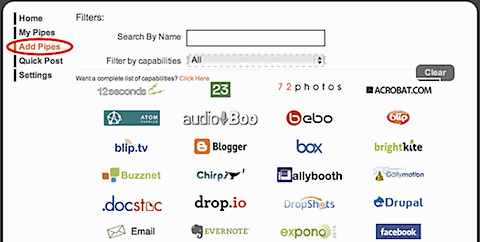
Uploading Files via PixelPipe
Once you set up your pipes, you are ready to start uploading files. Follow the steps below to upload a file to multiple sites from PixelPipe.
- Select Quick Post
- Choose the file to Upload
- Enter information for File
- Select Services to Upload to
- Click the Upload Button
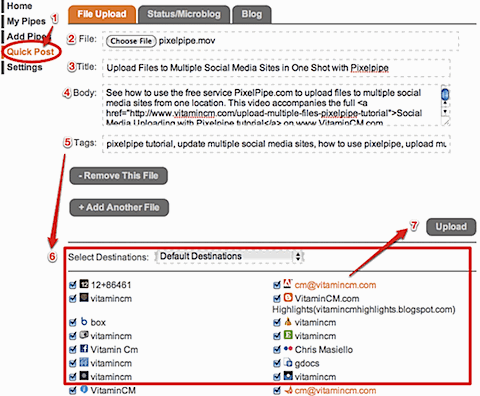
Updating your Status on Multiple Microblogs
If you want to update your status on sites like Facebook and Twitter in one shot, you can use the Status/Microblog tag of the Quick Post screen.
- Select Quick Post
- Click the Microblog tab
- Type your update in the Status field
- Click the Update Status Button
![]()
Posting an Article to Multiple Blogs at Once
If you want to post an article to multiple blogs, use the Blog tab of the Quick Post menu.
- Select Quick Post
- Click the Blog tab
- Type the title for your post in the Title field
- Type the contents of your update in the Body field
- Click the Make Blog Post Button
![]()
See the Video Tutorial for Uploading Files with PixelPipe
Other Resources
You can get handy applications for your computer or mobile phone right from PixelPipe’s large collection of Free Software.
They also publish news and cool tips on their blog.
Subscribe to VitaminCM.com for Free
Get free updates from VitaminCM.com

Get the VitaminCM.com Podcast
Create a Portable Document Scanner for your iPhone
Getting All of those Scraps into your Computer
Overview: You will learn how to turn your iphone into a portable document scanner for free in under 15 minutes. This will all be done using one piece of cardboard, a ruler, a utility knife and a pencil.
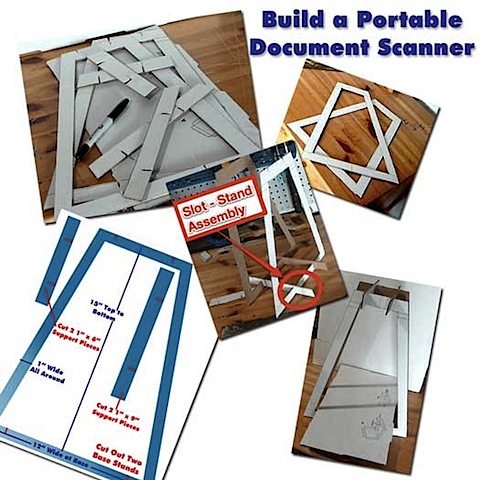
Getting Things Done With Creativity and Elbow Grease
Occasionally I need to get digital copies of papers into my home and/or work computers. I don’t feel like having two full-blown scanners wasting space on my desks, nor do I feel like buying them.
What’s my quick, free, space saving solution? Build a stand that allows me to use my iPhone to make quick images of documents.
I have a few simple requirements for this document scanner:
- Must be able to be assembled quickly and easily
- Muse capture 8.5″ x 11″ documents perfectly (no cropping)
- Must be able to be disassembled, and stored quickly and easily
- Must be cheap (better yet, FREE!)
I searched for a few alternatives and found this really cool option by Kyle Koch.
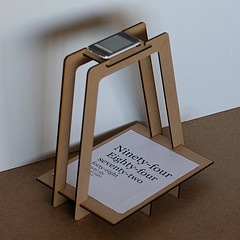
He sells them for $15 here. This is an awesome idea and $15 is very fair price. But what fun would that be? I decided to try to build my own for free.
This is my finished prototype:
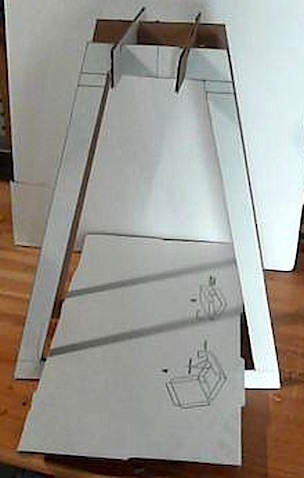
I place the document on the tray and the phone on the top supports with the camera application running. Then, I just press the “shoot” button and have a decent scan of the document. The key is to have the USB cable plugged in so that you can just grab them using the computer’s file manager. Also, the better the lighting, the happier you’ll be.
With a little bit of practice, I was able to get acceptable results on each documents first try.
Here are some of the document scans that I produced: (scaled down for this article)
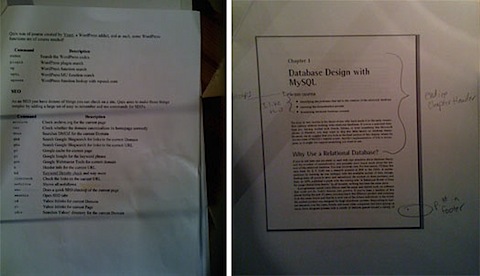
Not bad for $0 and 20 minutes time.
Instructions for Building your iPhone Document Scanner
I know, you want to build yourself one of these handy gadgets, right? Well believe me, it’s very simple.
What you Will Need
Supplies: Utility Knife , Pencil, Ruler or Yardstick
, piece of cardboard (15″ X 30″), scissor.
Instructions:
Print out and assemble the Templates diagram

Trace two Stand pieces on the cardboard

Cut out the Stand pieces using the Yardstick and Utility Knife (be very careful)
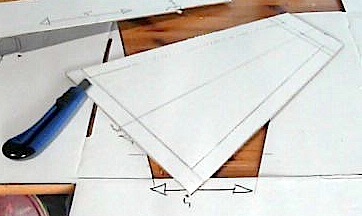
Trace and cut out the two Bottom Brackets
Trace and cut out the two Top Brackets
Cut the notches into the Stands and Braces as shown on the diagram
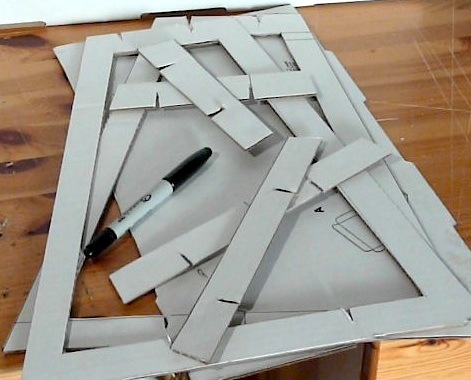
Insert the notches on top and bottom to assemble the Stand

Place the rectangular base into the stand
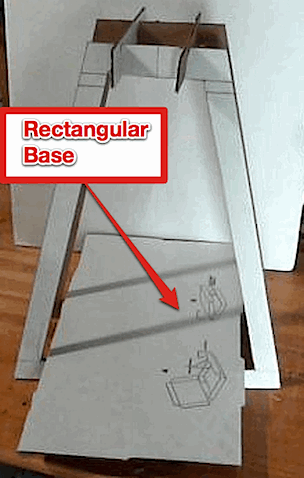
Place a document on the rectangular base
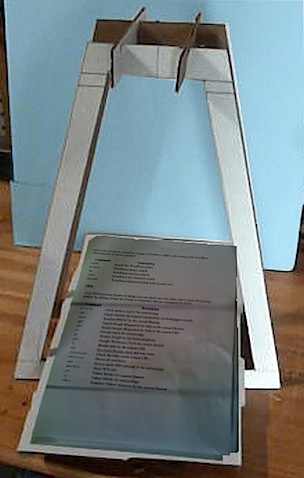
Turn the phone’s camera application on and place it on the top braces so that the document is in the picture
Take the picture.

Portable Document Scanner Video Tutorial
The following video tutorial shows you how to perform all of the steps necessary to make your scanner.
Subscribe to VitaminCM.com for Free
Get free updates from VitaminCM.com


 Subscribe via RSS Reader
Subscribe via RSS Reader Subscribe via YouTube
Subscribe via YouTube

 Subscribe via iTunes
Subscribe via iTunes Friend me on StumbleUpon
Friend me on StumbleUpon Friend me on Facebook
Friend me on Facebook Friend me on Digg.com
Friend me on Digg.com Share bookmarks on Delicious
Share bookmarks on Delicious Share music with me on Last.FM
Share music with me on Last.FM Share pictures on Flickr
Share pictures on Flickr